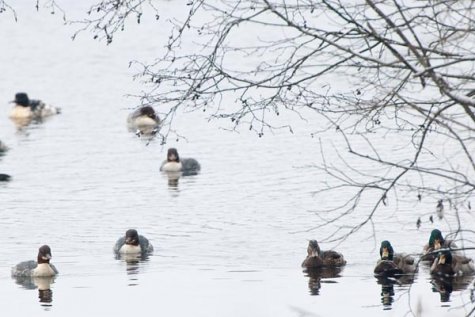Goosanders move widely around
Photo: Arne Ader, www.loodusemees.ee
Translation: Liis
Mallards and goosanders. Lake Mõrtsuka
Goosander Jääkoskel Mergus merganser
Goosanders are large, long and with spool-shaped bodies which hints at diving ducks. At this time of the year we meet them in inland water bodies as well as coastal seas and as Arne’s photo shows in company with swimming ducks. As autumn progresses and an ice cover forms they move towards south or to the coastal sea where they stay for winter if possible. Goosanders migrate in daytime.
The eclipse plumage differs from the springtime bright breeding plumage. The bright white plumage of males is gone. Both sexes have duller plumages, the female with a brown head and only on her we notice the head crest. This year’s young birds look like the female.
The long beak, hooked at the tip, hints at birds that catch fish as they dive. At a wintery sea it can sometimes be seen that the whole group catches fish systematically and that larger catches too can be managed. All kinds of sea-bottom inhabitants belong to the diet. Goosanders can stay submerged for long times, orientating with eyes open which is the reason for searching calmer spots where waves interfere less with vision.
Goosander observations: LINK









